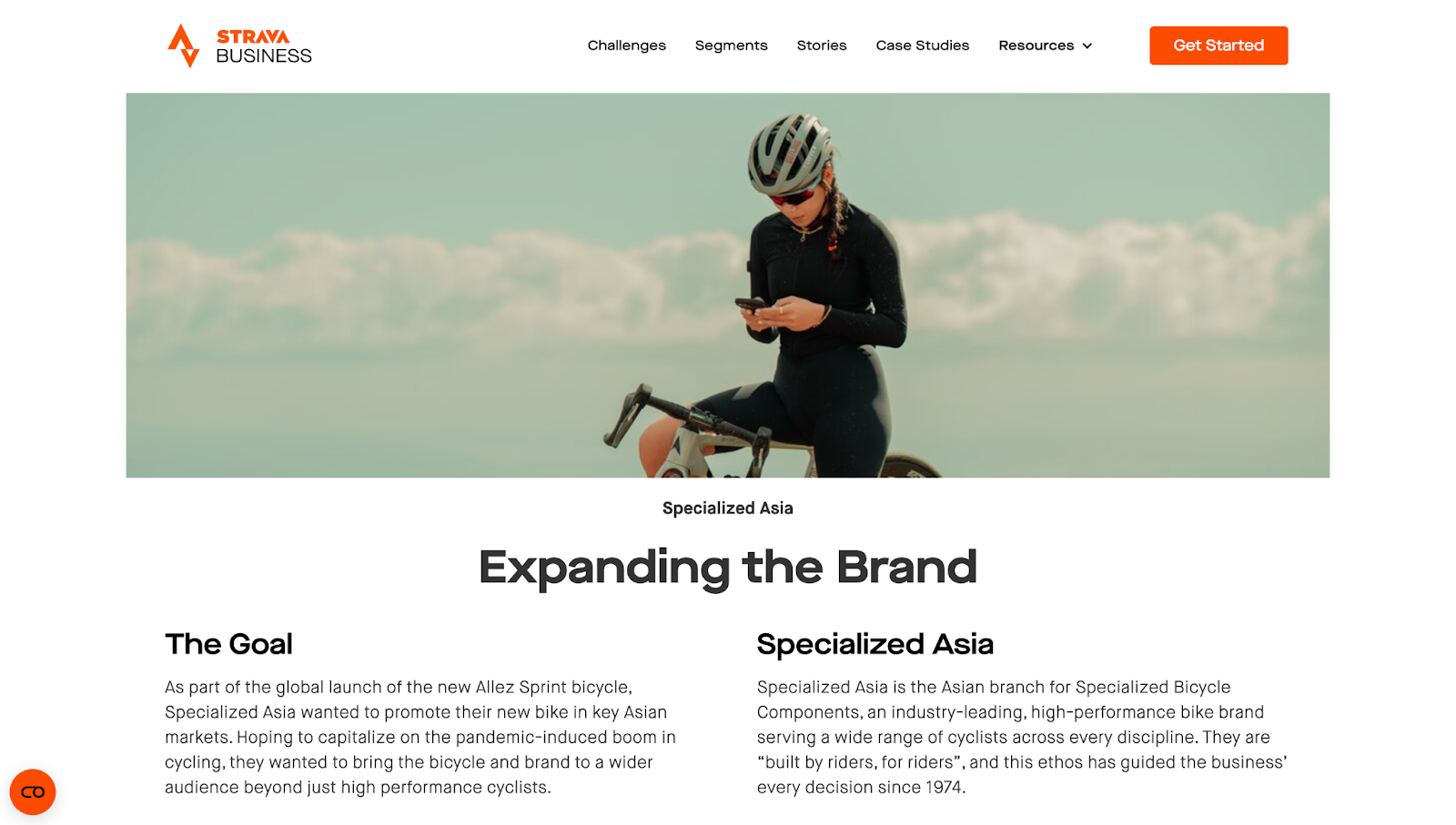Pinpoint your audience’s location and deliver relevant content that encourages clicks.
Whether you’re promoting a local event, offering region-specific services, or providing localized products, geotargeting allows you to deliver tailored content based on your target audience's location.
By leveraging location data, you can send highly relevant messaging that resonates with local interests and needs, increasing engagement and conversion rates.
Read on to learn the benefits of geotargeting your audience, with actionable tips to maximize your marketing efforts.
What’s geotargeting in advertising?
Geotargeting is a digital marketing strategy for delivering content and advertisements to people based on their geographic location. It helps build a local presence and improve customer segmentation. And by identifying a potential customer's approximate area and focusing on those most likely to respond positively to ads and promotions, you can personalize marketing messages to make content more relevant and engaging.
How does geotargeting work?
Geotargeting uses location data sourced from mobile device GPS signals, triangulation via cellular networks (pinpointing a location by forming triangles from previously known points), and computer IP addresses to reasonably estimate someone's physical whereabouts.
After finding the location and relevant data surrounding the potential customer's interests, behavior, and browsing history, you can deliver personalized ads and marketing messages to reflect local trends and cultural nuances.
The benefits of geotargeting customers
Here are a few benefits enterprises can expect when using geotargeting:
- Better ad personalization: Geotargeting lets you tailor advertising messages based on an audience’s specific needs and interests in different regions. For example, a web design agency can promote design features suited to regional business needs, like localization or relevant, language-based customer support for areas with significant multilingual populations.
- Increased brand awareness and authority: When you deliver content that resonates with local audiences, you’ll strengthen your brand presence and boost authority in your industry. You can feature tutorials and success stories from specific regions to boost your connection to the local community. For example, Strava organized a biking challenge to promote the release of a new bicycle and targeted cyclists in Singapore, Taiwan, Malaysia, China, and Japan. Participants had a shot at winning a new bicycle.

- Efficient advertising spending: With geotargeting, you’ll make the most of your advertising budget and resource allocation by focusing efforts where you're most likely to produce results. For instance, a collaborative communication platform, like Slack, could use geotargeting to focus on tech hotspots worldwide, like Silicon Valley and Bengaluru to make sure that tech professionals, who are most likely to subscribe, see their ads.
Geotargeting vs. geofencing
Geotargeting and geofencing are both location-based marketing techniques for customizing content delivery. But these approaches differ in how you’ll use data. Geotargeting is for vaster, culturally and contextually relevant marketing, and geofencing is for direct, location-triggered interactions.
The regional radius used in geotargeting is relatively broad, like a city or country. You can use geotargeting to customize marketing campaigns to suit that area's cultural, social, and economic contexts. A software company, for instance, might show different features in ads relevant to businesses in Europe versus Asia, reflecting different practices or regulatory environments.
On the other hand, geofencing is more precise and action-oriented. When using geofencing, you’ll create a virtual boundary around a specific location using GPS or radio frequency identification (RFID) technology to trigger an action when a mobile device physically enters or exits the area. This approach is best for more immediate and location-specific marketing. For example, a conference organizer might set up a geofence around the event's venue to send notifications, welcome messages, and exclusive content to attendees as they arrive or move around the area.



















Webflow Enterprise
Trusted by over 300,000 of the world’s leading brands, Webflow Enterprise empowers your team to visually build, manage, and optimize sophisticated web experiences at scale — all backed by enterprise-grade security.
How to implement geotargeting in 3 steps
No matter your industry, here are three steps to follow for building effective geotargeting marketing campaigns.
1. Define your target audience
Start by understanding your audience’s demographics, behaviors, location, and pain points. This step prevents unorganized and broad-reaching approaches and increases the chance of reaching consumers who are most inclined to consider your offerings.
Best practices when defining your audience include:
- Conducting market research. Use analytic tools like Google Analytics to identify where your current traffic and conversions come from. This will help pinpoint which regions are engaging with your products and services.
- Segmenting customers. Divide your audience based on location data — like state, city, or zip code — to personalize ads based on local preferences and cultural nuances.
For example, your data might reveal that some of your products are more popular in urban areas with large tech sectors, like San Francisco and New York. To reach the most interested people, you’d focus your marketing efforts there.
2. Set up geotargeting tools
Geotargeting tools enable more precise targeting, provide location-specific insights, and ensure your ads reach the intended recipients. These tools help you maximize ad spending by reducing how often ads get shown to people outside your target region, which, in turn, can lead to a higher return on investment (ROI).
Here are some popular geotargeting tools:
- Google Ads — Key features include location targeting (as specific as zip codes or as broad as countries), location exclusion, and tiered demographics. Google Ads also provides detailed reports on how different locations perform in response to your marketing.
- Facebook Ads — This includes radius targeting (creating a radius around a specific point for local targeting), location exclusion, and demographic reports, which provides precise details on your audience’s behaviors and interests.
- LinkedIn Ads — This includes business-to-business targeting options for reaching businesses and people who use LinkedIn based on location and demographic data, like job titles, company sizes, and industries.
3. Create geographically relevant content
Personalize your advertising content to reflect the culture, language, and needs of the people in your target area. When content resonates with local audiences, potential buyers feel understood, which could lead to higher engagement and improved brand trust.
Here are some tips:
- Localize content. Tailor the language, cultural references, and imagery in your content to suit the local audience. This includes translating text and using local idioms and slang when appropriate.
- Consider local and seasonal events. Adapt your ads to coincide with seasonal events, holidays, and celebrations. This shows you’ve done your homework and lets you reach those who tend to make purchases during festive periods. You can also offer seasonal discounts to boost engagement.
Target the right audience with Webflow
Geotargeting is an effective way to speak directly to local audiences, market your services, and get the most from your marketing budget and resources. With Webflow, you can take your targeting efforts a step further by implementing translation and localization features into your website.
Design, build, and customize a compelling localized website in Webflow and control how specific languages and elements show up across location-specific versions of your site.

Customize your site for visitors around the world
From design to translation to best-in-class SEO, Webflow Localization is an end-to-end solution for customizing your site for a worldwide audience.































